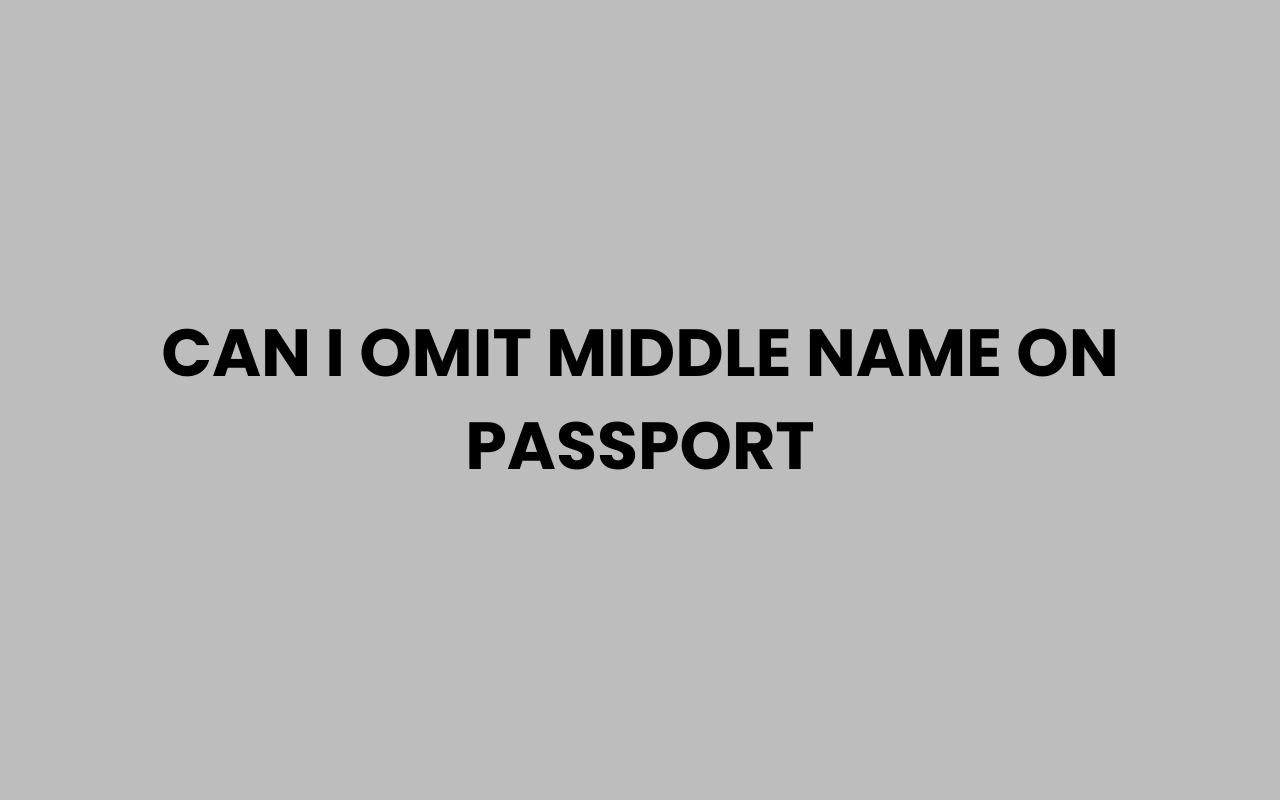Many individuals question whether they can omit their middle name when applying for a passport. The importance of a middle name in legal documents like passports often leads to confusion.
Understanding the rules and implications of omitting a middle name can help you make an informed decision.
Understanding Passport Naming Conventions
Passport naming conventions can vary by country, but generally, they require that your official documents accurately reflect your full legal name. This typically includes your first, middle, and last name as they appear on your birth certificate or other legal documents.
Why is this important? Ensuring consistency across all legal documents helps avoid issues in identity verification, travel, and other official matters.
The Importance of a Middle Name
The middle name serves as an additional identifier. While not always crucial, it can differentiate between individuals with similar first and last names.
However, omitting the middle name might not always lead to issues, depending on the specific requirements of your country’s passport authority.
“Your passport must have your full name as shown on your citizenship evidence (birth certificate, naturalization certificate, or citizenship certificate).”
Rules for Omitting Middle Names
Before deciding to omit your middle name, it is crucial to understand the rules set by your country’s passport issuing authority. Some countries are strict about having the full legal name on the passport, while others might allow certain omissions.
| Country | Middle Name Requirement | Notes |
|---|---|---|
| United States | Required | Must match birth certificate or other legal documents |
| Canada | Flexible | May omit if not used in other legal documents |
| United Kingdom | Required | Must match identity documents |
| Australia | Optional | Can omit if not used officially |
Potential Consequences of Omitting a Middle Name
Omitting a middle name can have several consequences, particularly if it creates discrepancies between your passport and other identification documents. This can lead to issues during international travel, at border controls, or when dealing with legal matters.
For example, discrepancies can lead to delays or additional scrutiny during passport checks and can complicate processes such as applying for visas or immigration status.
Steps to Take if You Want to Omit Your Middle Name
If you decide to omit your middle name, it is essential to ensure that the omission is consistent across all your legal documents. Follow these steps to minimize issues:
- Verify Requirements: Check with your local passport office or government website for specific rules regarding middle names.
- Update Other Documents: Ensure that all your legal documents reflect the same name format.
- Provide Explanations: Be prepared to explain the omission if questioned during travel or legal processes.
Legal Name Changes
If your middle name presents ongoing issues, you might consider a legal name change. This process can formally remove the middle name from your identity, ensuring all documents match.
This process typically involves submitting a petition to the court, providing reasons for the change, and possibly attending a hearing. Once approved, you can update your passport and other identification documents to reflect your new legal name.
Conclusion
Omitting a middle name on a passport is a decision that should not be taken lightly. While some countries allow for flexibility, ensuring consistency across all legal documents is crucial.
Always consult with your local passport issuing authority and consider the potential implications before making changes to your official name.
Ultimately, whether you choose to include or omit your middle name, being informed and prepared can help prevent complications in the future. Consistency and clarity in your legal identity are key to smooth interactions with legal and travel authorities.

